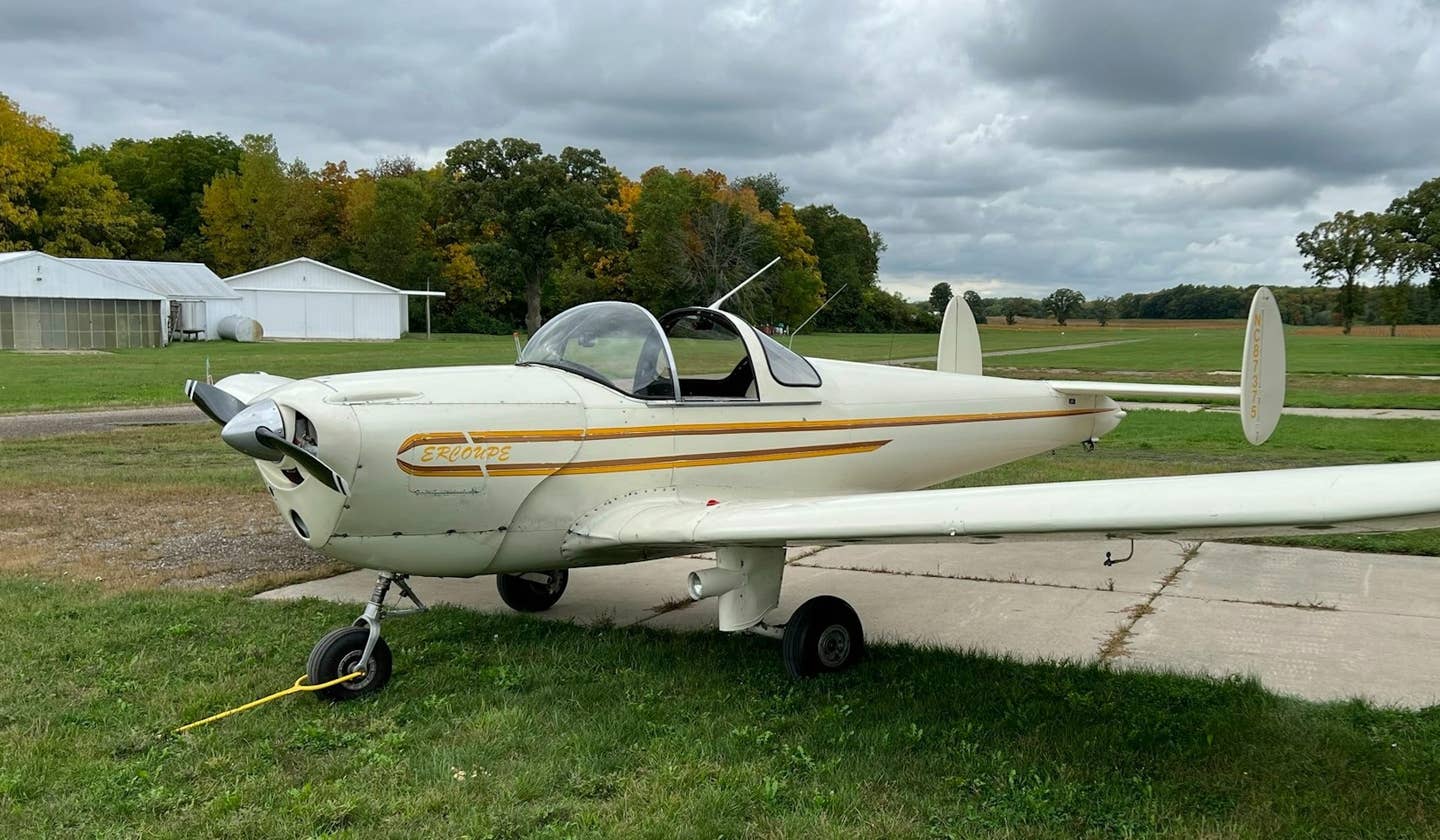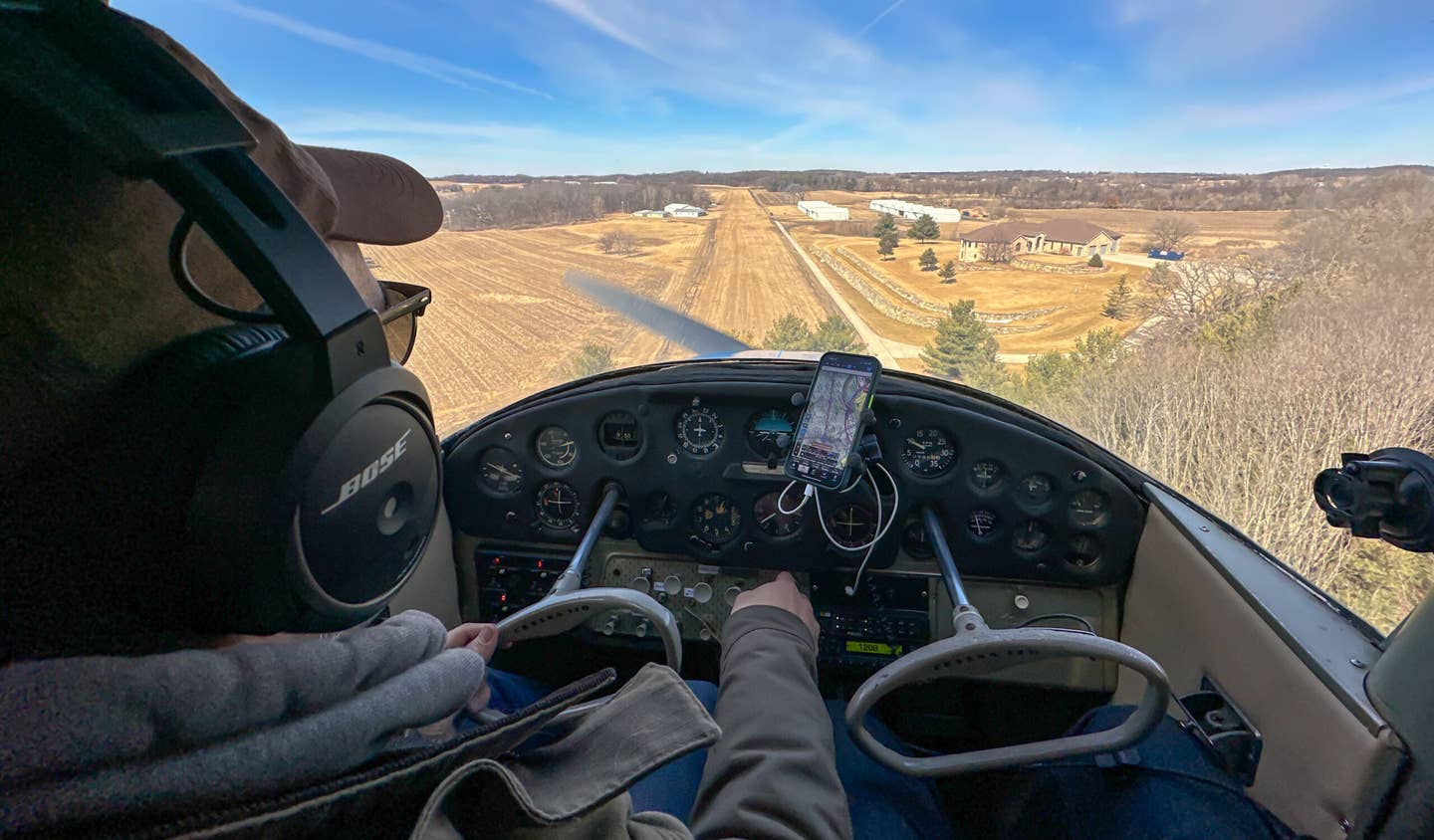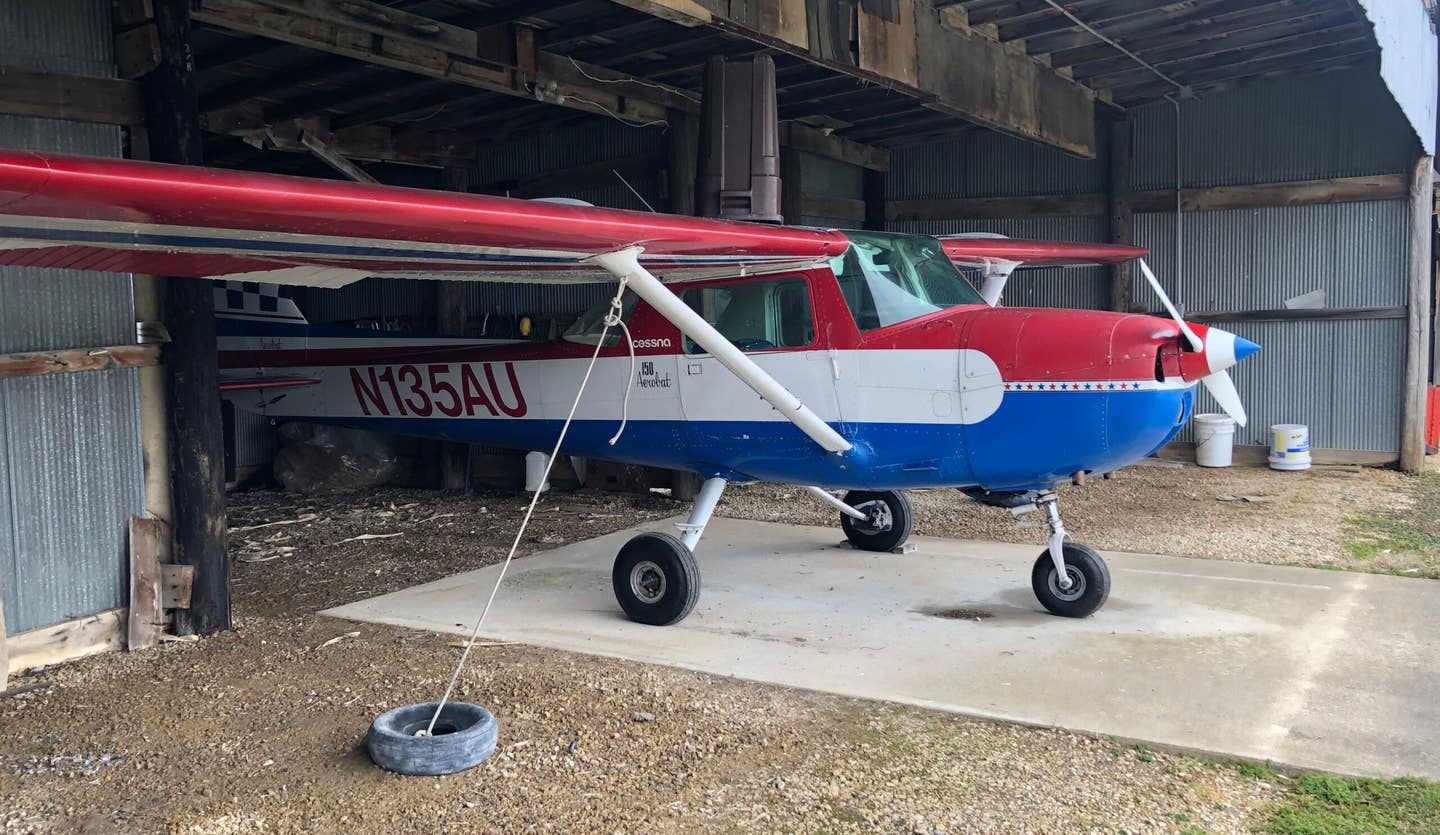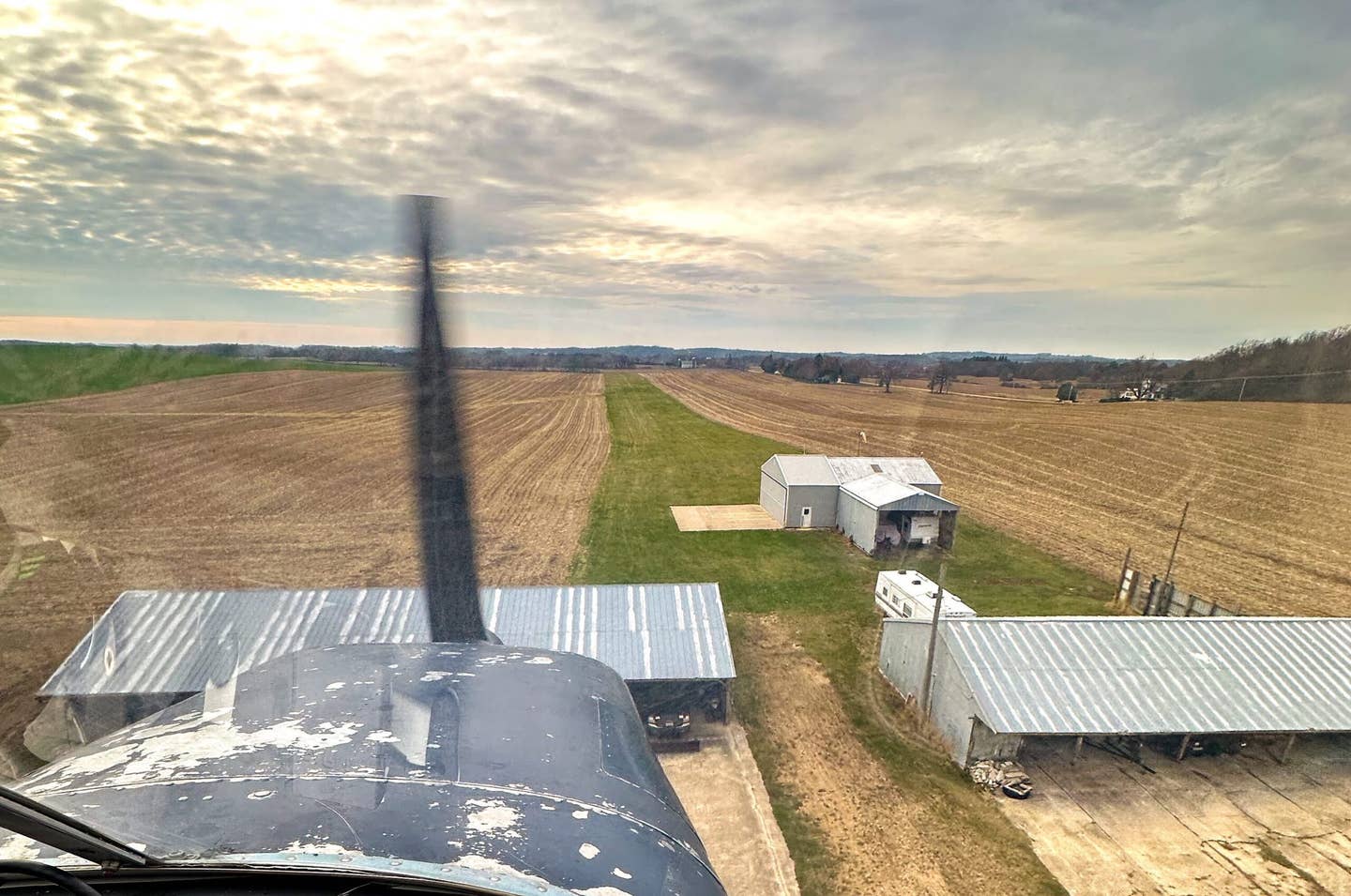A GA Pilot on the Success of Oshkosh
Good times rule, despite foul weather, mosquito bites, and blisters.
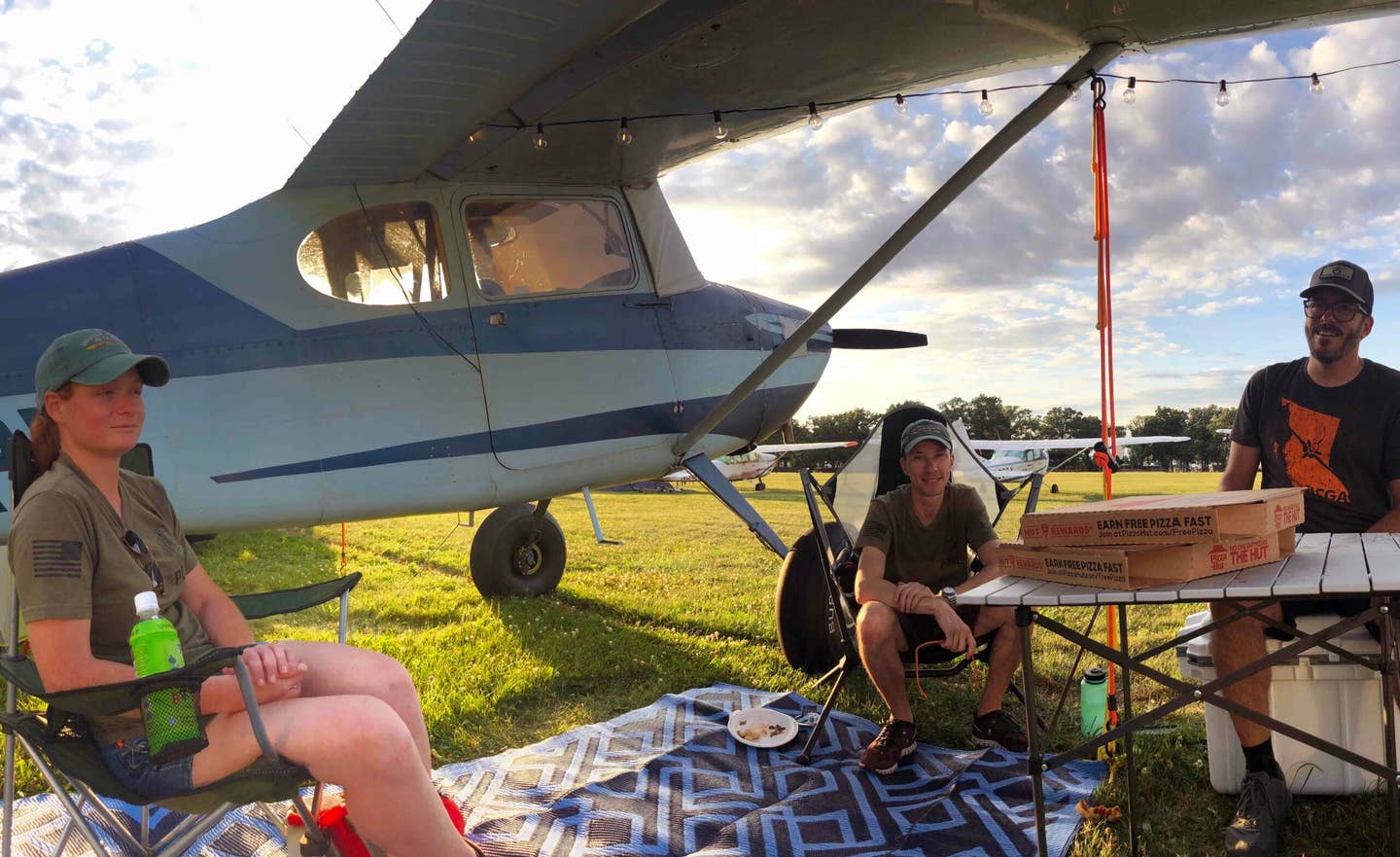
Most come to Oshkosh for the airplanes but return for the people. Here, an underwing pizza party brings old and new friends together. [Photo: Jason McDowell]
August has arrived, and with it, the depressing end of AirVenture 2022, aka Oshkosh. As we trudge back into our normal daily routines, we nurse sunburns, mosquito bites, blisters, and the bittersweet memories of good times with friends whom we might not see for another 12 months. It is the Monday of all Mondays, and were it not for the heavenly comforts of indoor plumbing and proper beds, the return to normal life might be unbearable.
For me, it was a memorable Oshkosh for many reasons. Most notably, it was the first in which I flew myself both into and out of the event solo. I cheated a bit last year.
Because I had taken delivery of my airplane only days before AirVenture 2021, I didn’t have enough time to complete my checkout. As a workaround, a fellow 170 owner based at Oshkosh flew his to me, swapped airplanes, and then acted as PIC with me in my machine. This way, I was able to camp beneath my own wing, and we simply reversed the process at the end of the week.
This year was different. Fully checked out and able to stumble into and out of most airports with something very loosely resembling proficiency, I was confident I’d be able to make the trip there and back safely and without any trouble. Despite living only about 80 miles away, I nevertheless had to contend with challenging weather in the form of gusty winds, and I opted to head up quite early.
After spending the first few days in a local hotel to get some remote work done, I finally headed back to my fantastic parking/camping spot in the Vintage area to set up my campsite. In years past, prior to aircraft ownership, I would typically drive up in my car. I’d park in a nearby shopping center parking lot, hike into the North 40 with my gear, and camp with friends next to their airplane. It was fun, but it doesn’t compare to flying your own aircraft into the event.
Tied down in row 66 West, spitting distance from the Beechcraft Staggerwings and nearly within sight of Boeing Plaza, my campsite was in an enviable location. With such easy access to most attractions, my airplane would serve as my AirVenture basecamp as well as an outdoor lounge where friends could stop by and visit. The amenities would, therefore, have to live up to the challenge.
I made sure to pack the solar-powered party lights I had purchased last year. Strung along the bottom of my right wing, they soak up solar energy during the day and then automatically turn on when it gets dark. When combined with my newly-purchased solar-powered tiki torches with simulated LED flames, an outdoor area rug that matches the airplane, and some comfy chairs, the space beneath my wing became every bit as inviting as a local cantina, lacking only booze and music.
I did make sure to provide beverages, however. Thanks to the EAA Vintage group, a UTV regularly roams around selling bags of ice. I brought a high-quality cooler, kept it stocked with water and tea, and kept it iced down so cold drinks were always available. Having mooched campsites from friends for so many years, I made sure to invite them all to stop by and help themselves to shade and a drink, even if I wasn’t there.
The first few days were relatively quiet. I’d typically wake up, brew some coffee in my Aeropress, and kick back in the shade as I watched the early arrivals taxi in and tie down. As friends showed up, they would stop by, grab a drink, and plop into a chair to catch up. There, we’d chat and share some laughs. It was my own Oshkosh front porch, and it was a good time.
Any given AirVenture is guaranteed to be hit with some severe weather at some point, and this year was no exception. A storm system rolled into Wisconsin the Saturday preceding the show’s official start. This system had produced winds in excess of 80 mph on the west side of the state, so it had my attention.
Like last year, I taped some pool noodles to the upper surface of my wing. It looks ridiculous, but it’s a technique utilized by the STOL demo pilots and is not uncommon in the Alaskan bush, so I’m a believer. Unlike tricycle gear aircraft that sit on the ground with a level deck angle, taildraggers sit with a positive deck angle and a corresponding positive angle of attack. This means that aerodynamically, they’re always trying to fly, and are thus more susceptible to pulling ground anchors out of the soil. The pool noodles act as spoilers, disturbing the airflow over the wing and killing lift.
As the storm rolled through, serious winds battered the grounds. An antique taildragger was blown up onto its nose, at least one tree trunk snapped in half, and some control surfaces were damaged on various aircraft. I later learned that the peak wind gust reached 58 mph. We were fortunate that damage was so minimal.
In addition to serving as a basecamp and a meeting place for friends at Oshkosh, your airplane also serves as an item of study and conversation for other owners of the type. Quite regularly, other 170 owners would inquire about the various modifications I’d installed and discuss ownership in general. These proved to be valuable conversations, as tips, advice, and recommendations could be gleaned from owners with significantly more experience than me.
As is always the case, time entered warp speed and before we knew it, the end of the week had arrived. Friends began to filter out to begin their journeys home, typically to faraway places many states away. Being only 80 miles from home, I had more flexibility and could afford to stay a bit later.
Winds were once again my primary concern, but the forecast took pity on me with light and manageable conditions. On Friday morning, I packed up and prepared to face the departure chaos. With the EFB set up, frequencies noted on my scratch pad, and caffeine in my veins, I was ready for the worst.
As I taxied out, the departure taxiway was a ghost town. Somehow, I was one of the only aircraft taxiing to runway 36L at 10:30 a.m. on Friday. I reached the end without having to wait for a single airplane, performed a quick runup, and was cleared for takeoff without delay.
The 36L departure calls for an immediate right turn to the southeast and an altitude restriction of 1,300 feet, which at Oshkosh is about 500 feet agl. On climbout, I finally spotted some traffic and monitored an RV and an agplane hard at work down below. With no traffic conflicts, I trundled out and made my way south.
A confused windsock welcomed me home. A wind of perhaps 8 knots flowed through my home airport, becoming distracted and changing direction every few seconds like a pilot walking through the warbird area at AirVenture. I wasn’t able to see the actual windsock pivots from pattern altitude, but I suspected they must have been glowing orange from the constant motion.
As is becoming my tradition, my landing was entirely safe and entirely ugly. As I flared, a light quartering tailwind decided I’d be landing about 300 feet farther down the runway than I had intended. With ample distance remaining, I simply maintained a constant deck angle, stayed coordinated, and eventually plopped down in a three-point attitude.
Having arrived home safely, I could say with confidence that Oshkosh had been a success. For the first time, I had flown myself to and from the event. I had successfully weathered the storm that rolled through. And best of all, I spent time with friends old and new, visiting and sharing laughs beneath my wing as the sound of Ford Trimotors, Bell 47s, and 10,000 other airplanes wafted through the grounds.
It was a good year, and I’m already looking forward to 2023.

Sign-up for newsletters & special offers!
Get the latest FLYING stories & special offers delivered directly to your inbox


